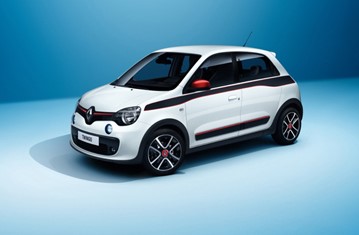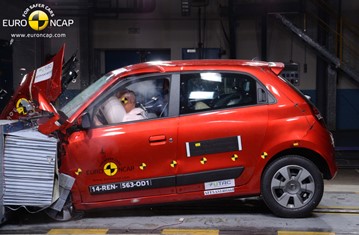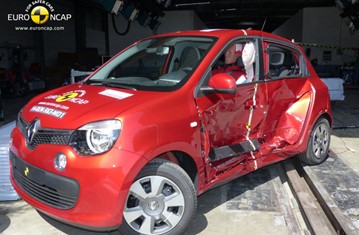Find more information in the General Comments section of the assessment
Find more information in the Rating Validity tab of the assessment
- See More
- See More
- See More
- See More
- Good
- Adequate
- Marginal
- Weak
- Poor
 Passenger
Passenger
 Driver
Driver
 Rear Seat
Rear Seat
 Front Seat
Front Seat
 Car
Car
 Pole
Pole
- Good
- Adequate
- Marginal
- Weak
- Poor


Passenger
outboard
Fitted to the vehicle as standard
Not fitted to the test vehicle but available as option
Not Available
-
Infants up to 13 kg
-
Infants and toddlers up to 18 kg
-
Toddlers from 9 to 18 kg
-
Toddlers over 18 kg
Easy
Difficult
Safety critical
Not allowed
| Seat Position | |||
|---|---|---|---|
| Front | 2nd row | ||
| Passenger | Left | Right | |
| Maxi Cosi Cabriofix (Belt) | |||
| Britax Römer King Plus (Belt) | |||
| Britax Römer Duo Plus (ISOFIX) | |||
| Britax Römer KidFix (Belt) | |||
| Maxi Cosi Cabriofix & EasyFix (Belt) | |||
| Maxi Cosi Cabriofix & EasyFix (ISOFIX) | |||
| BeSafe iZi Kid X3 ISOfix (ISOFIX) | |||
| Maxi Cosi Pearl & Familyfix (ISOFIX) | |||
| Britax Römer KidFix (ISOFIX) | |||
Easy
Difficult
Safety critical
Not allowed
Based on dummy readings alone, the Twingo scored maximum points for its protection of the 1½ year infant in the crash tests. Forward movement of the 3 year dummy, sat in a forward-facing seat, was not excessive but high tensile forces were recorded in the neck. The passenger airbag can be disabled to allow a rearward-facing child restraint to be used in that position. Clear information is provided to the driver regarding the status of the airbag and the system was rewarded. All of the categories of child restraints for which the car is designed could be properly installed and accommodated by the car.
- Good
- Adequate
- Marginal
- Weak
- Poor

Head Impact 15.3 Pts
Pelvis Impact 3.2 Pts
Leg Impact 6.0 Pts
The protection provided by the bumper was good, and the car scored maximum points in this area. However, the performance of the front edge of the bonnet was mixed but was predominantly weak or poor. The protection provided by the bonnet surface was mostly marginal or adequate, with some poor results recorded on the stiff windscreen pillars.
- Good
- Adequate
- Marginal
- Weak
- Poor
| Speed Limitation Function | Manually Set |
| System Name | ESP | |
| Performance | ||
| Applies To | All seats | ||
| Warning | Driver Seat | Front Passenger(s) | Rear Passenger(s) |
| Visual | |||
| Audible | |||
|
|||
The Twingo has a seatbelt reminder system as standard for the front and rear seats. A standard-fit speed assistance system informs the driver of the relevant speed limit and can be set by the driver accordingly. Electronic stability control is also standard. A lane departure warning system is available as an option but was not tested as it is not expected to be sold in sufficient numbers. There is no autonomous braking system on the Twingo.
- Specifications
- Safety Equipment
- Videos
- Rating Validity
Specifications
Tested Model Renault Twingo 1.0 'E2', LHD
Body Type - 5 door hatchback
Year Of Publication 2014
Kerb Weight 945kg
VIN From Which Rating Applies - applies to all Twingos of the specification tested
Class City and Supermini
Safety Equipment
Note: Other equipment may be available on the vehicle but was not considered in the test year.
Fitted to the vehicle as standard
Fitted to the vehicle as option
Not fitted to the test vehicle but available as option
Not Available
Not Applicable
Videos
Rating Validity






Find more information in the General Comments section of the assessment
 Share
Share









The passenger compartment of the Twingo remained stable in the frontal impact. Protection of the passenger dummy was good for all parts of the body. Dummy readings indicated good protection of the knees and femurs of both the driver and passenger dummy. Renault showed that a similar level of protection would be provided to occupants of different sizes and to those sat in different positions. Rearward movement of the brake pedal led to a marginal rating for protection of the driver's feet and ankles. In the side barrier test, protection of all body regions was good except that of the chest, which was adequate. In the more severe side pole impact, dummy readings of rib deflections indicated weak protection of the chest. Protection against whiplash injuries in a rear-end collision was rated as good for the front seats and poor for the rear.